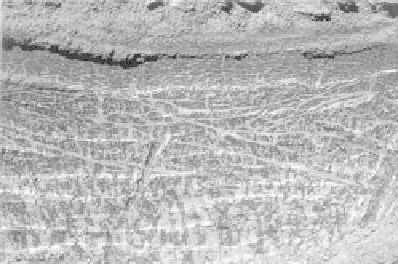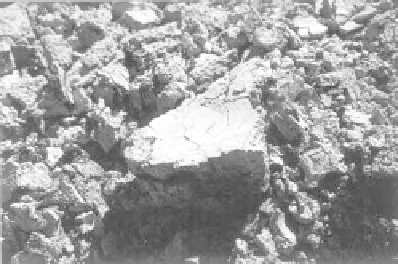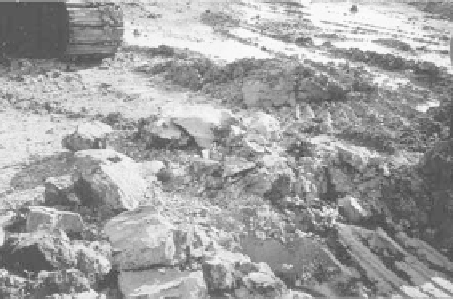Environmental Engineering Reference
In-Depth Information
It has been common practice to adopt the fully softened strength to approximate the mass
strength of the soil. This is based on back analyses of slides in English clays (Skempton,
1977; Chandler, 1984). The authors' experience is that in some soils, e.g. fissured residual
basalt and tuff (MacGregor et al., 1990; Moon, 1992) and fissured marine clays (Thorne,
(a)
View of side of test pit. Pit is about 1.5 m deep
(b)
View of pieces of the fissured soil. The large
piece is about 300 mm across
Figure 6.29.
Weathered Tertiary clay, which exhibits shrink-swell (desiccation) induced fissures, the
major sets being inclined at about 20° to the horizontal, consistent with passive failure on
swelling. (a) view of side of test pit, (b) view of pieces of the fissured soil.
Figure 6.30.
Fissures in pieces of weathered volcanic tuff. The fissures are induced by desiccation when
the ground surface was exposed above sea level. Largest pieces are about 450 mm across.




